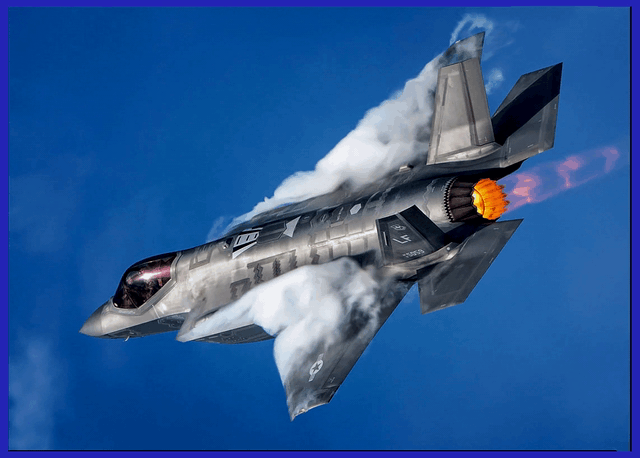In 21st-century warfare, air supremacy stands as the paramount imperative to immobilize the enemy with unrivalled power. Here, we present the Comprehensive Details of the F-35 Lightning II Aircraft as of 2023. With this resolute strategic objective in mind, Lockheed Martin has meticulously crafted the F-35, an extraordinary all-weather, pure stealth, multirole 5th Generation combat aircraft. This remarkable aircraft is purposefully engineered to excel in both air superiority and strike missions.
Embracing the pinnacle of aerospace innovation, Lockheed Martin spearheads the F-35 program as the primary contractor alongside industry giants Northrop Grumman and BAE Systems. The aircraft boasts three main variants: the conventional takeoff and landing (CTOL) F-35A, the short take-off and vertical-landing (STOVL) F-35B, and the carrier-based (CV/CATOBAR) F-35C.
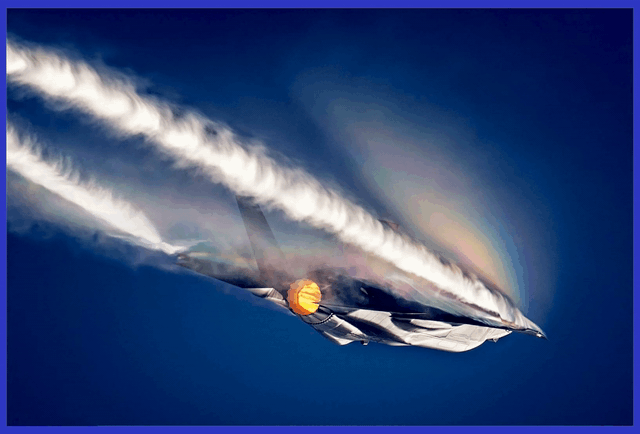
In the early 1990s, a competition was initiated with the aim of selecting a Joint Strike Fighter (JSF) that would precisely fulfil the future requirements of the US military. Two designs reached the final round: Boeing’s X-32 and Lockheed Martin’s X-35. After years of trials, Lockheed Martin ultimately emerged as the victorious contender in October 2001. The development of the X-35 was primarily financed by the United States, supplemented by contributions from partner nations of the North Atlantic Treaty Organization (NATO), which include the United Kingdom, Australia, Canada, Italy, Norway, Denmark, the Netherlands, and Turkey. However, Turkey was later excluded from participation due to violations of the F-35 terms and conditions.
Subsequently, the F-35 successfully conducted its inaugural flight in 2006. The U.S. Marine Corps introduced the F-35B variant into active service in July 2015, followed by the U.S. Air Force’s F-35A in August 2016 and the U.S. Navy’s F-35C in February 2019. With plans to procure 2,500+ F-35s by 2044, the United States envisions this exceptional aircraft as the principal asset in its crewed tactical aviation, catering to the requirements of the Air Force, Navy, and Marine Corps over the coming decades. Moreover, the F-35 is poised to become a pivotal element of both NATO and allied air power, expected to remain operational until 2070!
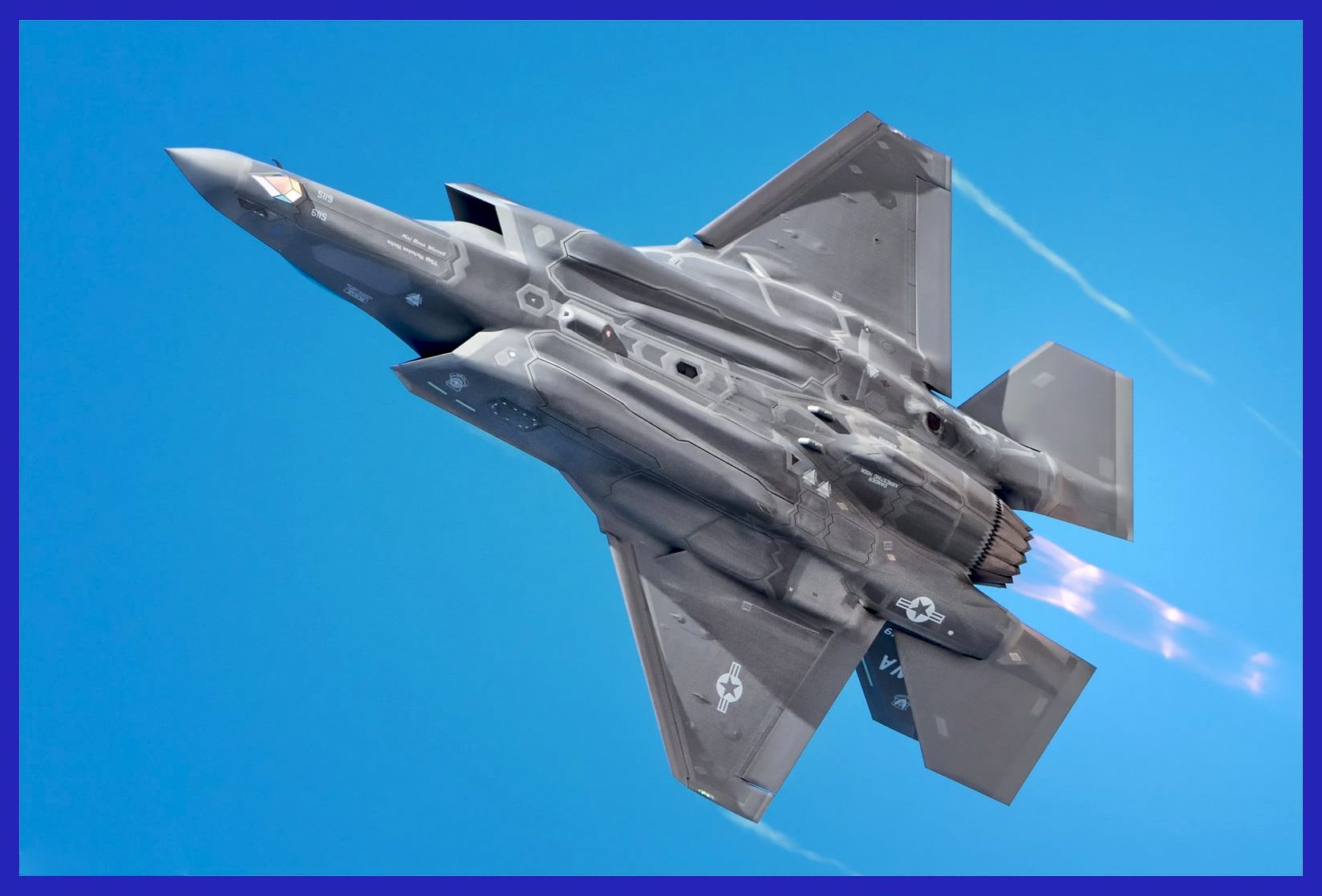
The Concept Behind the Development of the Lockheed Martin F-35 Lightning II:
The demand for a next-generation multirole fighter aircraft that could satisfy the changing operational needs of the American military and its foreign allies led to the creation of the Lockheed Martin F-35 Lightning II, which was designated as The Joint Strike Fighter (JSF) program. The program aimed to develop a family of aircraft that could replace a range of outdated fighter aircraft across various military branches.
Joint Strike Fighter (JSF) Development & Acquisition Program:
The JSF competition refers to a competitive process that took place in the early 1990s to select a Joint Strike Fighter (JSF) for the United States military. The objective of this competition was to identify and acquire a next-generation fighter aircraft that would effectively meet the future operational requirements of the U.S. Air Force, Navy, and Marine Corps. The competition entailed aerospace companies submitting their designs and proposals for evaluation. After a meticulous assessment, two finalists emerged: Boeing’s X-32 and Lockheed Martin’s X-35. Each company was tasked with producing two prototype air vehicles to demonstrate different capabilities, including conventional takeoff and landing (CTOL), carrier takeoff and landing (CV), and short takeoff and vertical landing (STOVL).
Lockheed Martin’s prototypes consisted of the X-35A for CTOL demonstration, which was later converted to the X-35B for STOVL testing, and the X-35C with a larger wing for CV compatibility evaluation. The X-35A successfully conducted flight tests to assess subsonic and supersonic flying qualities, handling, range, and manoeuvre performance. It then underwent modifications to become the X-35B, showcasing features such as the Short Takeoff and Vertical Landing (STOVL) system and roll-control ducts. The X-35B effectively demonstrated stable hover, vertical landing, and short takeoff in a distance of fewer than 500 feet (150 meters). The X-35C, designed for carrier operations, conducted successful field landing carrier practice tests.
Ultimately, on October 26, 2001, the winner of the competition was announced, and the selected aircraft, the Lockheed Martin F-35 Lightning II (formerly known as the X-35), was chosen to be the primary JSF and the flagship stealth multirole fighter for the United States and its allied nations. Separately, Pratt & Whitney was awarded a development contract for the F135 engine, which powers the JSF.

The Story of Each Variant Since Its Acceptance:
The first flight of the Lockheed Martin X-35A conventional variant prototype was on October 24, 2000. Following that, the X-35C carrier variant (CV) had its first flight on December 16, 2000. The X-35B STOVL (short take-off and vertical landing) variant prototype had its maiden flight in March 2001, and vertical flight testing commenced in June 2001.
The first production F-35 took to the air on December 15, 2006, initiating what the manufacturers described as the most comprehensive flight test program in military aviation history. Three versions of the F-35 were developed: a conventional takeoff and landing variant, a short takeoff/vertical landing (STOVL) variant designed for operating off small ships and in close proximity to front-line combat zones, and a carrier variant specifically designed for catapult launches and arrested recovery on board aircraft carriers.
The Air Force variant of the F-35A significantly enhances its air expeditionary force capabilities, positioning it at the forefront of 21st-century aviation. This fighter aircraft boasts a larger internal weapons bay, along with an internal gun, providing increased capacity for carrying various munitions. Additionally, the F-35A exhibits extraordinary internal fuel capacity, allowing pilots to embark on missions with significantly larger payloads, capable of covering greater distances. The aircraft’s remarkable thrust capabilities and ability to perform 9-g manoeuvres further enhance its overall performance and manoeuvrability.
The F-35B model, created for the US Marine Corps, Royal Air Force, and Royal Navy, incorporates a shaft-driven lift fan propulsion system, enabling STOVL capability. This variant and the USAF F-35A conventional variant only marginally differ in terms of characteristics, except for the propulsion system. The B model replaces the US Air Force’s normal refuelling receptacle, typically located on the aircraft’s upper surface, with a refuelling probe that is installed into the right side of the forward fuselage.
The STOVL model does not have an internal gun, but it does offer an available external gun pack. Apart from a lever that enables the pilot to switch between hovering and conventional flight modes, the cockpit of the B model is nearly identical to that of the USAF variant and shares all of its electrical components. Primarily designed as a replacement for the AV-8B Harrier, the STOVL model can achieve speeds faster than supersonic and has the capability to carry armaments internally, something the Harrier was unable to do.
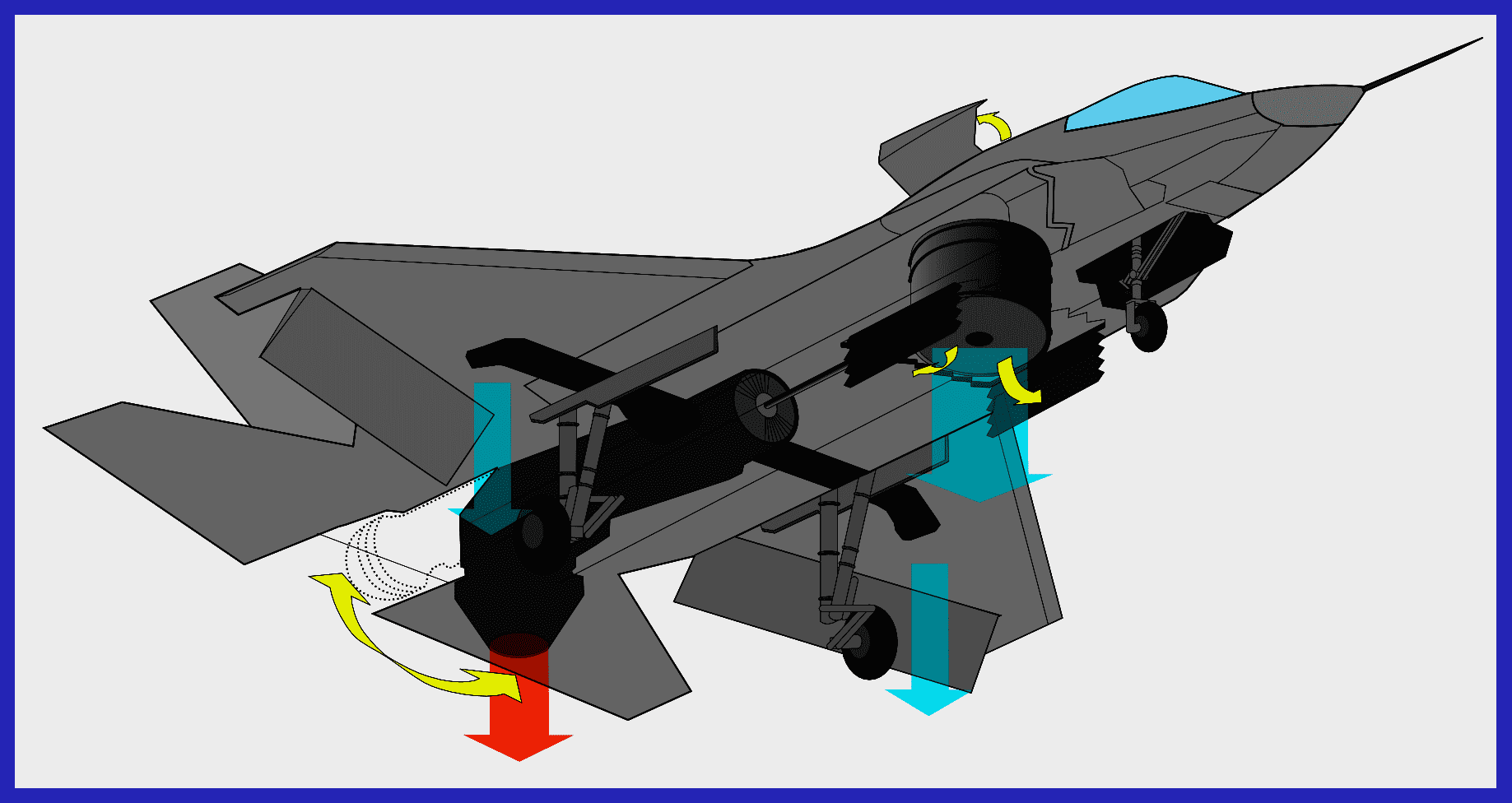
The F-35C is the dedicated version for the US Navy, and most of the differences between the F-35C and the other variants are attributed to its operation from full-size aircraft carriers. Consequently, the F-35C, which marks the US Navy’s first stealth aircraft, incorporates larger wing and tail control surfaces to enhance the management of low-speed carrier approaches.
The internal structure of this variant is reinforced to withstand the loads associated with catapult launches and arrested landings. Moreover, the increased wingspan also provides an extended range. Similar to the B model, the F-35C is equipped with a refuelling probe on the right side of the forward fuselage. Weapon loads, cockpit layout, countermeasures, radar, and other features are shared with the other F-35 variants, but the F-35C’s range and payload surpass those of the strike fighters it will replace in the US Navy service.
The F-35I “Adir” serves as the Israeli variant of the Lockheed Martin F-35 Lightning II. The Hebrew term “Adir,” which means “mighty” or “great,” aptly reflects the aircraft’s advanced capabilities. In December 2016, Israel became the first nation outside of the United States to receive the F-35, marking a significant milestone. Originally, Israel planned to acquire a total of 50 F-35I aircraft. However, reports in 2023 indicated that Israel was contemplating expanding its F-35 fleet to encompass up to 75 aircraft.
The F-35I incorporates distinct modifications and enhancements tailored to meet the precise requirements of the Israeli Air Force (IAF) and its unique operational environment. These modifications are a testament to Israel’s technological contributions and the integrated upgrades introduced into the F-35 platform.

Flexibility Across the F-35 Variants:
Commonality and flexibility form the foundation of the F-35 design, encompassing the mission systems, subsystems, and airframe. Over 80% of all parts, including the largest and most expansive components like the engine and key avionics units, are common across all three variants. The extensive level of commonality among the F-35 variants and throughout the entire production program has been highlighted as crucial for achieving affordability, even though the development and production costs of the aircraft exceeded initial expectations.
With a fully integrated weapon system, F-35 pilots possess the ability to positively identify and accurately engage mobile and moving targets in high-threat environments, regardless of the time of day or weather conditions. The F-35 weapon system provides pilots with genuine multi-role, multi-mission capabilities.

Several key objectives guided the development of the (JSF) F-35 Lightning II:
- Stealth Technology: The F-35 Lightning II was designed to incorporate advanced stealth capabilities to reduce its radar cross-section and enhance its survivability in modern combat environments. The use of stealth technology allows the aircraft to operate deep inside hostile territory with reduced risk of detection.
- Multirole Capability: The F-35 Lightning II was intended to be a highly versatile aircraft capable of performing a wide range of missions, including air-to-air combat, ground attack, and reconnaissance. Its design and systems were optimized to excel in all these roles, reducing the need for specialized aircraft and streamlining operational efficiency.
- Advanced Sensors and Avionics: To give pilots better situational awareness and to enable accurate targeting and engagement of both air and ground targets, the F-35 Lightning II was outfitted with cutting-edge sensors and avionics equipment.
- Network-Centric Operations: The F-35 Lightning II was designed to be a network-centric aircraft, capable of sharing information with other platforms in real-time. By serving as a central node in a networked battlespace, the F-35 can gather, process, and distribute critical mission data, enhancing overall situational awareness and enabling synchronized operations with other assets.
- Cost Efficiency: The JSF program aimed to achieve significant cost savings through economies of scale by developing a common aircraft design and leveraging international partnerships. The goal was to reduce acquisition and maintenance costs while maximizing the operational capabilities of the aircraft.

Advancements and Ongoing Development:
The F-35 Lightning II has seen significant advancements and ongoing development since its initial introduction.
Block Upgrades: The F-35 program follows a structured block upgrade approach, where each block introduces new capabilities and advancements. These upgrades focus on enhancing the aircraft’s performance, sensors, avionics, and software systems. The initial combat-capable configuration, known as Block 2B, which included basic air-to-air and strike capabilities, received a readiness declaration from the USMC in July 2015.
The first upgrade program, called Continuous Capability Development and Delivery ( C2D2 ), was initiated in 2019 and is currently scheduled to continue until 2024. In December 2018, the Block 3F configuration began its operational test and evaluation ( OT&E ), marking the conclusion of the System Development and Demonstration ( SDD ) phase. Additionally, the F-35 program is actively engaged in sustainment and upgrade development, with early Low-Rate Initial Production ( LRIP ) aircraft being gradually upgraded to the baseline Block 3F standard by 2021.
The ongoing focus is on Block 4, which aims to further enhance the aircraft’s capabilities, including expanding the range of available weapons options, improving sensors, and increasing data fusion capabilities. In terms of near-term development priorities under C2D2, the integration of additional weapons, specifically tailored for international customers, takes precedence. Furthermore, avionics will undergo enhancements, ESM ( Electronic Support Measures ) capabilities will be improved, and support for Remotely Operated Video Enhanced Receiver ( ROVER ) will be added.
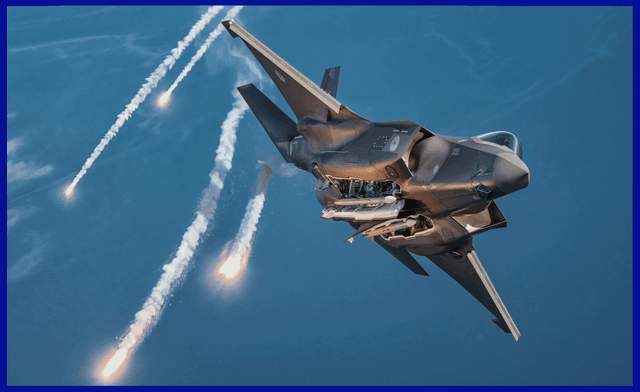
Sensor Enhancements: Efforts are underway to enhance the F-35’s sensor capabilities. The Advanced Sensor Solutions Program (ASSP) focuses on improving sensor performance, including the active electronically scanned array (AESA) radar, electro-optical targeting system (EOTS), and distributed aperture system (DAS). These enhancements aim to increase the aircraft’s detection range, target tracking, and overall situational awareness.
Weapons Integration: The F-35 Lightning II continues to expand its weapons integration capabilities. Ongoing efforts include integrating and testing a wide range of air-to-air and air-to-ground weapons to further enhance its mission flexibility and effectiveness. The aircraft’s internal weapons bays and external hardpoints are continually optimized to accommodate new and advanced weapon systems.
Training and Sustainment: Ongoing efforts focus on refining training programs and sustainment processes for F-35 operators. This includes the development of advanced simulators, training systems, and logistics support to ensure the readiness and effectiveness of the aircraft throughout its operational life.
Cost Reduction and Affordability: One of the ongoing goals of the F-35 program is to achieve cost reductions and improve affordability. Efforts are made to optimize production processes, streamline supply chains, and identify areas for cost savings while maintaining the aircraft’s capabilities and performance.
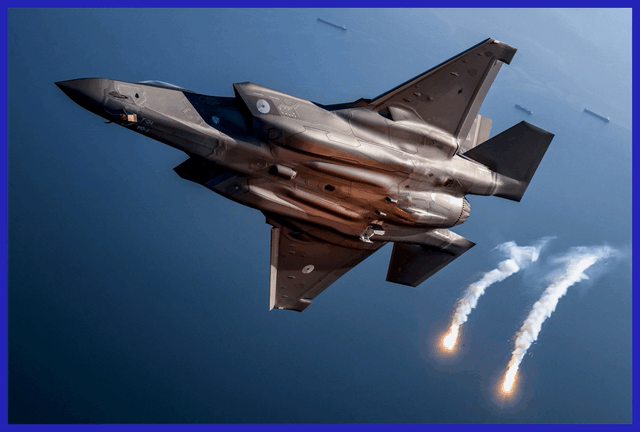
An Analysis of the Lockheed Martin F-35 Lightning II Design:
The Lockheed Martin F-35 Lightning II’s design comprises a number of significant elements and traits that support its cutting-edge performance and capabilities. An evaluation of its design is provided here:
Aerodynamic Configuration: The F-35 Lightning II has a blended wing-body design with a slightly curved wing and body. This configuration provides a balance between aerodynamic efficiency and internal weapons carriage capacity. The aircraft’s design allows for reduced drag and improved manoeuvrability, enabling it to achieve high speeds and perform agile flight manoeuvres.
Stealth Design & RAM: The F-35’s design places significant emphasis on stealth, with meticulous attention given to minimizing radar cross-section ( RCS ) through careful shaping of the airframe. The F-35 Lightning II incorporates a low observable or stealth design, effectively reducing its radar cross-section and infrared signature. This is achieved through a streamlined and angular shape, accompanied by faceted surfaces that effectively deflect and absorb radar waves. The F-35’s diverter supersonic air inlet ( DSI ) adopts a compression bump and forward-swept cowl, which replaces traditional splitter gaps or bleed systems.
This innovative design diverts the boundary layer away from the inlet duct, eliminating the need for a diverter cavity and further reducing the radar signature. At specific frequencies and angles, the RCS of the F-35 has been characterized as even lower than that of a metal golf ball. The aircraft also incorporates measures to minimize its infrared and visual signatures, along with strict control of radio frequency emitters to prevent detection. To enhance its stealth capabilities, the F-35 is equipped with radar-absorbent materials ( RAM ) and coatings. Additionally, the aircraft’s internal weapon bays eliminate the need for external stores, further reducing its radar signature and reinforcing its stealth capabilities.
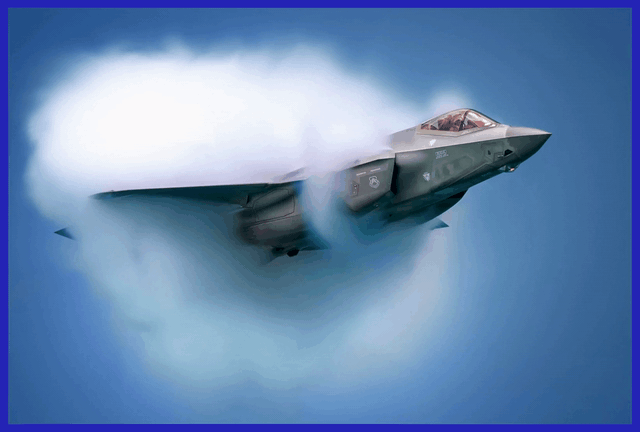
Internal Weapon Bays and Armament: The F-35 Lightning II incorporates two internal weapon bays strategically positioned within the fuselage. These internal bays facilitate the concealed carriage of various air-to-air and air-to-ground weapons, including guided bombs and missiles. By internalizing the weapons, the F-35 maintains its stealth characteristics, effectively reducing its radar signature. Moreover, this design minimizes aerodynamic drag, ultimately enhancing the overall performance of the aircraft.
Each internal weapons station of the F-35A and F-35C variants has the capacity to carry ordnance weighing up to 2,500 lb (1,100 kg), while the F-35B variant can carry up to 1,500 lb (680 kg). The available armament includes combinations of Joint Direct Attack Munition (JDAM), Paveway series of bombs, Joint Standoff Weapon (JSOW), GBU-39 Small Diameter Bombs (SDB), GBU-53/B SDB II air-to-surface weapons, as well as the AIM-120 AMRAAM air-to-air missile.
The F-35 Lightning II is equipped with six external weapons stations to support missions that do not require stealth capabilities. The wingtip pylons are designed to accommodate an AIM-9X or AIM-132 ASRAAM missile, and they are positioned at an outward cant to reduce radar cross-section. The external wing stations have the capacity to carry larger air-to-surface weapons that cannot fit inside the internal weapons bays, such as the AGM-158 Joint Air to Surface Standoff Missile (JASSM) cruise missile.
By utilizing both internal and external weapons stations, the F-35 can carry a combination of eight AIM-120 air-to-air missiles and two AIM-9 missiles. Alternatively, it can be configured to carry six 2,000 lb (910 kg) bombs, two AIM-120 missiles, and two AIM-9 missiles. Additionally, the F-35A variant is armed with a 25 mm GAU-22/A rotary cannon, located internally near the left wing root, and is equipped with 182 rounds.
Lockheed Martin is currently developing a weapon rack called Sidekick, which will enable the internal outboard station to carry two AIM-120 missiles, thereby increasing the internal air-to-air payload to six missiles. This feature is planned to be introduced in Block 4 of the F-35. Block 4 will also incorporate modifications to the hydraulic line and bracket to allow the F-35B variant to carry four SDBs (Small Diameter Bombs) per internal outboard station. The integration of the MBDA Meteor air-to-air missile is also in progress.
Both the United States Air Force (USAF) and United States Navy (USN) have plans to internally integrate the AGM-88G AARGM-ER missile into the F-35A and F-35C variants. Furthermore, the capability for nuclear weapons delivery via internal carriage of the B61 nuclear bomb is planned for Block 4B in 2024.
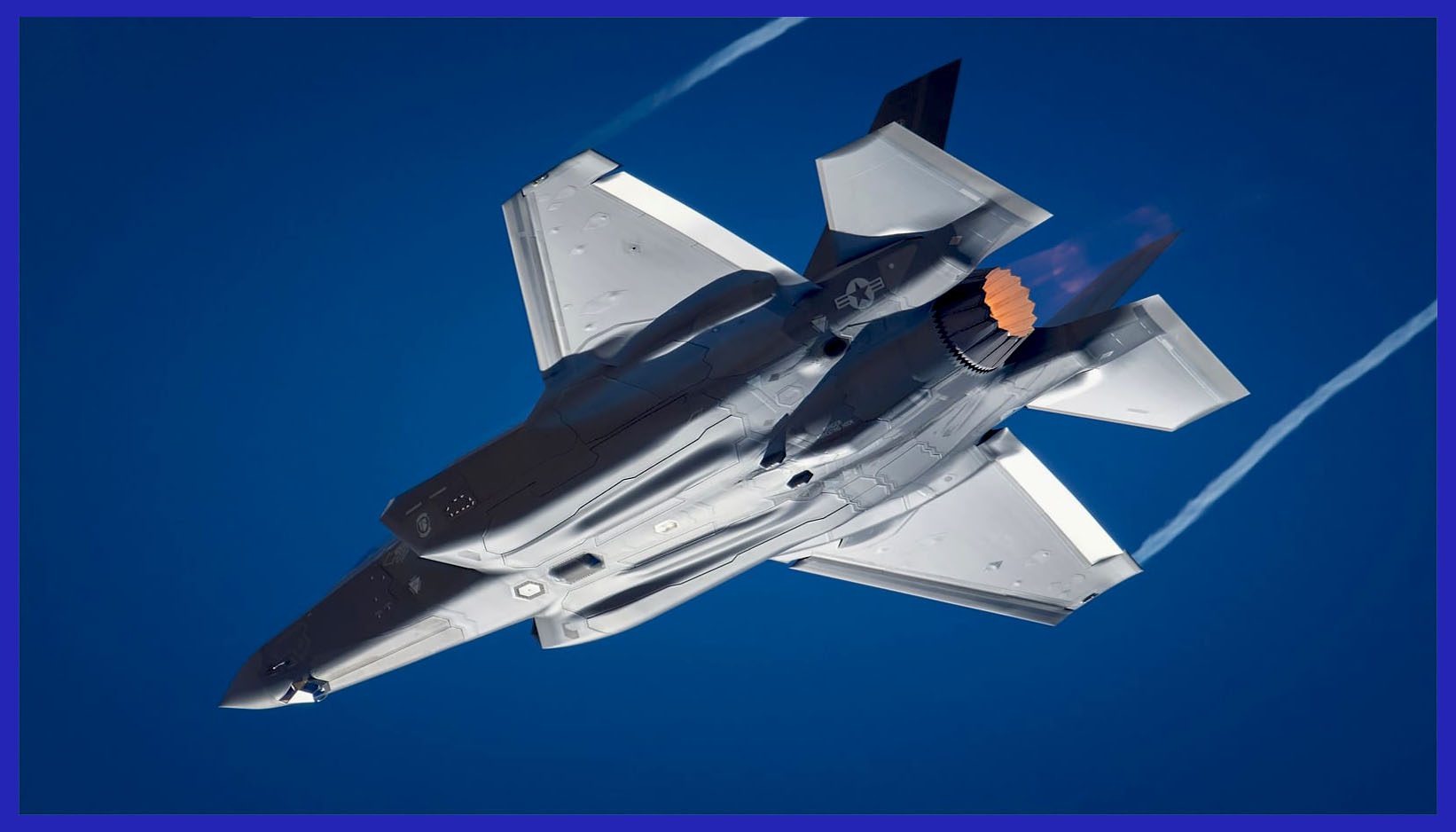
Advanced Materials: The F-35 Lightning II incorporates cutting-edge advanced composite materials, including carbon fibre composites, to effectively reduce weight while simultaneously increasing structural strength. These advanced materials play a crucial role in enhancing the aircraft’s overall durability, agility, and fuel efficiency. Additionally, they contribute to minimizing radar reflection, thus further augmenting the F-35’s stealth capabilities. Notably, the F-35 integrates a fibre mat radar-absorbent material (RAM) that is infused into the aircraft’s skin.
This specific RAM material offers enhanced durability, ease of handling, and expedited curing compared to older RAM coatings. There is ongoing consideration for applying similar coatings to older stealth aircraft like the F-22. Moreover, the F-35 design addresses skin corrosion concerns by utilizing a less galvanic corrosion-inducing skin gap filler, reducing the number of gaps in the airframe skin requiring filler, and incorporating improved drainage systems.
Sensors and Avionics Integration: The F-35 Lightning II seamlessly integrates a wide array of advanced sensors and avionics systems. Within the aircraft’s nose section, the active electronically scanned array (AESA) radar provides exceptional long-range detection and tracking capabilities. Positioned under the nose is the electro-optical targeting system (EOTS), which employs high-resolution sensors to enable pilots to detect and track targets day or night. To achieve 360-degree situational awareness, the distributed aperture system (DAS) utilizes multiple infrared cameras mounted around the aircraft.
The F-35’s mission systems represent some of the most complex elements of the aircraft. The avionics and sensor fusion are meticulously designed to enhance pilots’ situational awareness, command and control capabilities, and facilitate network-centric warfare. Key sensors incorporated in the F-35 include the Northrop Grumman AN/APG-81 AESA radar, BAE Systems AN/ASQ-239 Barracuda electronic warfare system, Northrop Grumman/Raytheon AN/AAQ-37 Electro-optical Distributed Aperture System (DAS), Lockheed Martin AN/AAQ-40 Electro-Optical Targeting System (EOTS), and Northrop Grumman AN/ASQ-242 Communications, Navigation, and Identification (CNI) suite. The F-35’s design allows for seamless sensor intercommunication, providing a cohesive image of the local battlespace and enabling versatile utilization and combination of sensor capabilities.
The APG-81 radar employs electronic scanning to swiftly adapt the radar beam, incorporating passive and active air-to-air modes, strike modes, and synthetic aperture radar (SAR) capability. It also facilitates multiple target track-while-scan at ranges exceeding 80 nautical miles (150 km). The radar antenna is tilted backwards to maintain stealth characteristics. Complementing the radar, the AAQ-37 DAS features six infrared sensors, providing comprehensive missile launch warning and target tracking capabilities. Furthermore, the DAS functions as a situational awareness infrared search-and-track (SAIRST) system, offering pilots spherical infrared and night-vision imagery projected onto the helmet visor.
The F-35’s design inherently allows for the incorporation of improved processors, sensors, and software enhancements throughout its lifespan, ensuring it remains technologically up-to-date and adaptable to evolving operational requirements.
Data Fusion and Communication: The F-35 Lightning II is designed to operate as a network-centric aircraft. It incorporates a powerful data fusion system that collects and processes information from various sensors and sources. This system enables the pilot to have a comprehensive picture of the battlefield, integrating inputs from radar, infrared sensors, electronic warfare systems, and other sources. The aircraft also has the capability to share data with other platforms in real-time, enhancing overall situational awareness and enabling coordinated operations.
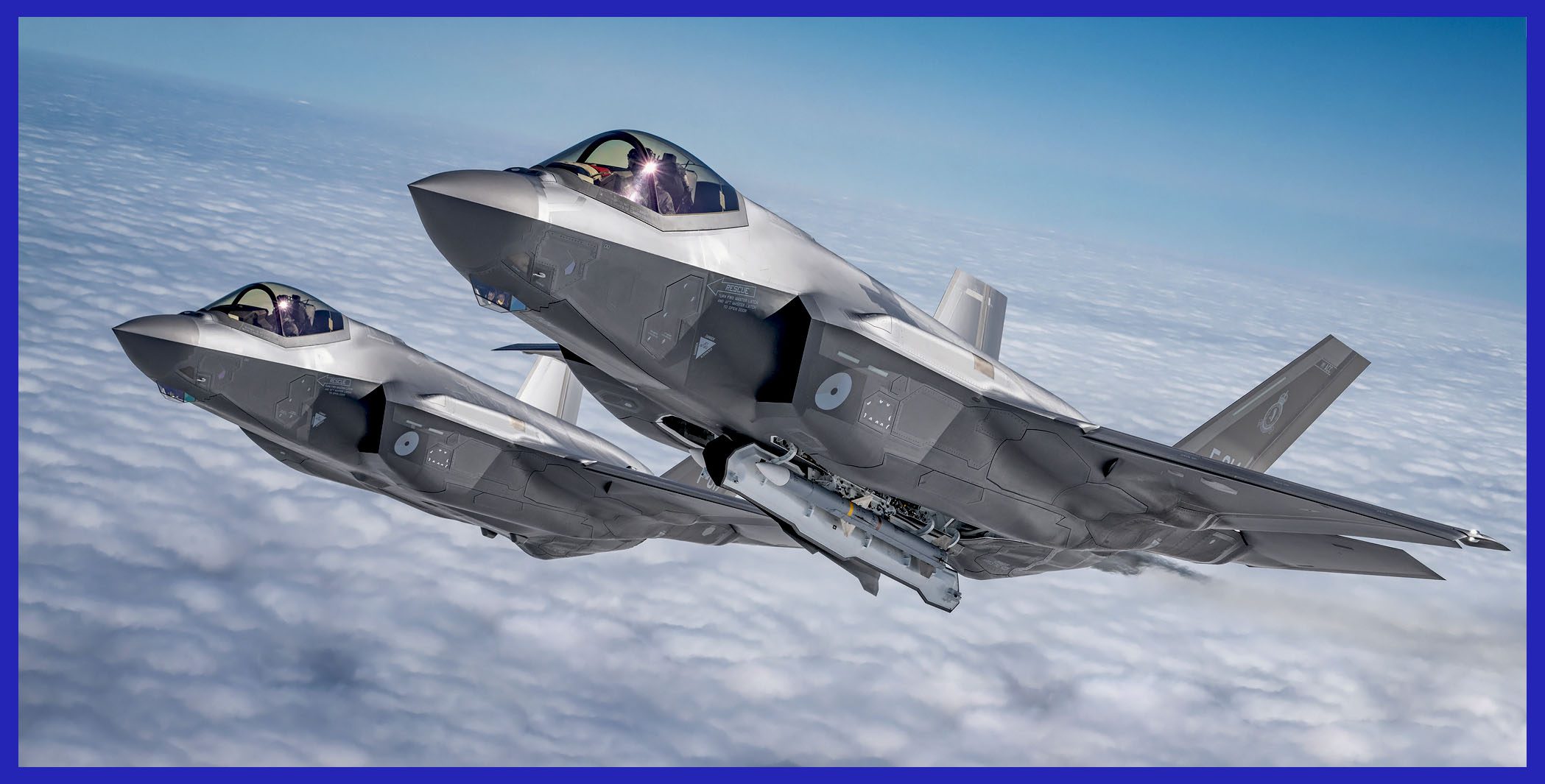
The intelligent cockpit configuration:
- Large-area Display Screens: The F-35 cockpit is equipped with expansive panoramic touchscreen displays. The primary display features a 20- by 8-inch (50 by 20 cm) panoramic touchscreen, showcasing flight instruments, store management, CNI (Communications, Navigation, and Identification ) information, and integrated caution and warnings. The pilot has the ability to personalize the information arrangement. These displays offer vital flight data, sensor information, weapon status, and other crucial details in a customizable format. The touchscreen interface enables the pilot to interact with diverse systems and choose different display configurations. A smaller stand-by display is positioned below the main one.
- Voice Command System: Furthermore, the cockpit incorporates a speech-recognition system. The F-35 is equipped with a voice command system that empowers the pilot to control specific functions using voice commands, minimizing the requirement for manual input and enhancing operational efficiency.
- Helmet-Mounted Display System (HMDS): The F-35 incorporates an exceptional helmet-mounted display system that provides the pilot with real-time, high-resolution imagery, and sensor data. The HMDS enables the pilot to have a virtual “look through” the aircraft, significantly augmenting situational awareness and bolstering targeting capabilities. Unlike traditional head-up displays, the F-35 employs a helmet-mounted display system (HMDS) that projects flight and combat information onto the visor of the pilot’s helmet, ensuring crucial information is readily available.
- In addition, the HMDS can display infrared and night vision imagery from the Distributed Aperture System, allowing the pilot to “see through” the aircraft. Moreover, the HMDS enables an F-35 pilot to engage targets with missiles even when the nose of the aircraft is pointing in a different direction by guiding missile seekers at high angles off-boresight. Each helmet carries an approximate cost of $400,000.
- Distributed Aperture System (DAS): The F-35 incorporates a DAS, which consists of multiple infrared cameras distributed around the aircraft. The DAS provides the pilot with a 360-degree spherical view of the surroundings, including infrared imagery for night vision, missile warning, and detection of other aircraft or threats.
- Electro-Optical Targeting System (EOTS): The F-35 incorporates the Electro-Optical Targeting System, a high-resolution targeting sensor seamlessly integrated into the aircraft’s nose. This advanced system offers extensive long-range targeting and recognition capabilities for both air-to-air and air-to-ground missions. The EOTS efficiently relays precise target data to the pilot’s displays and weapons systems, enhancing their effectiveness and accuracy.
- Side Stick Controllers: The F-35 uses side stick controllers instead of a traditional centre stick. These controllers provide precise and intuitive control of the aircraft and are designed to reduce pilot workload.
- Throttle and Engine Controls: The throttle controls and engine systems are integrated into the cockpit design. The pilot can adjust engine power and manage other engine-related functions through dedicated controls.
- Up-Front Control Panel (UFCP): The UFCP is a touch-sensitive control panel located near the pilot’s left hand. It allows the pilot to access and control various aircraft systems, including communication, navigation, and weapon systems.
- On-Board Oxygen Generation System (OBOGS): The cockpit is equipped with an OBOGS that supplies oxygen to the pilot during flight without the need for traditional oxygen bottles. This system ensures a continuous and sufficient supply of oxygen.
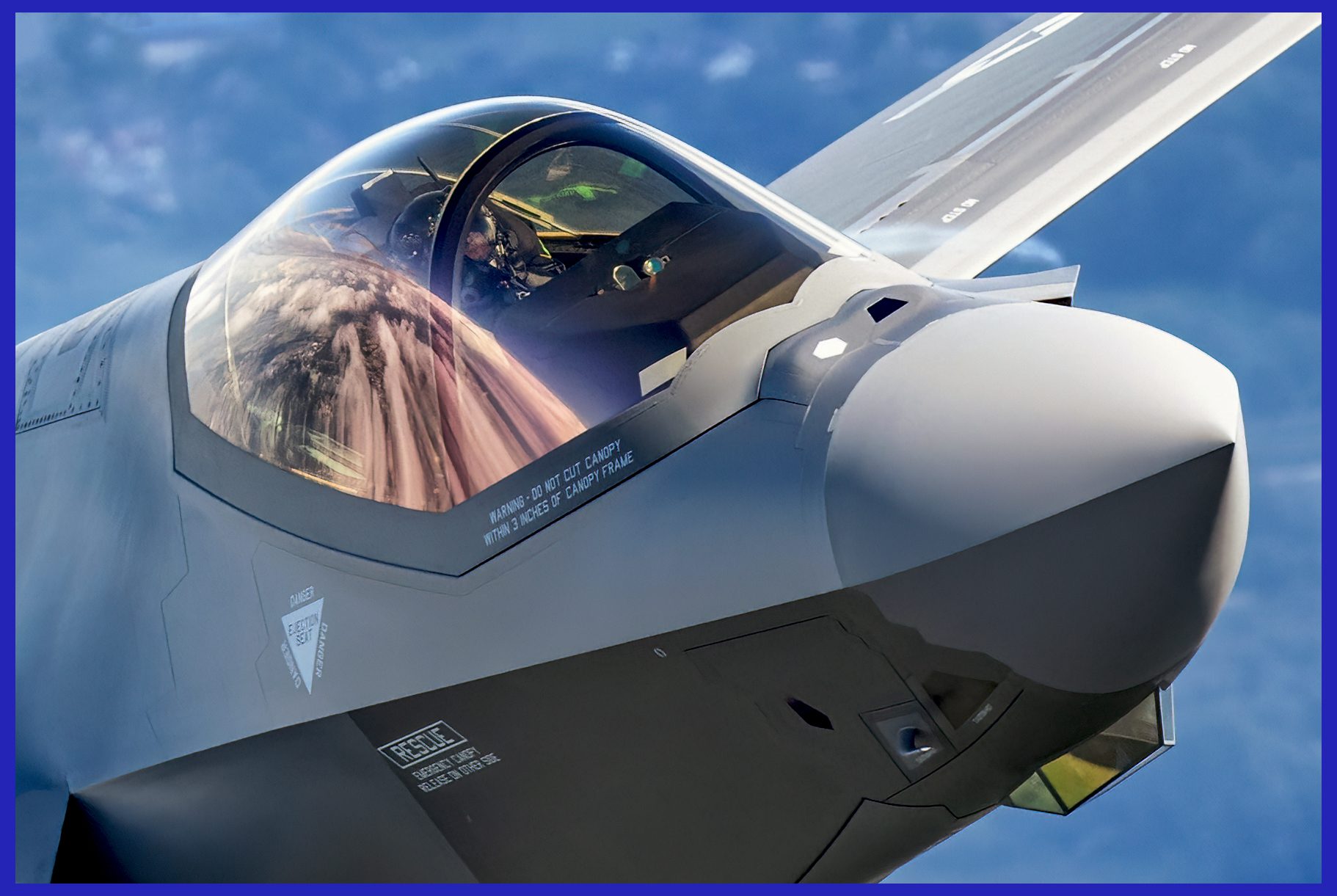
The F-35 Power Plant: The F-35 is equipped with a high-performance, afterburning, turbofan engine. powered by the Pratt & Whitney F135 low-bypass augmented turbofan with a rated thrust of 28,000 lbf (125 kN) at military power and 43,000 lbf (191 kN) at afterburner. Derived from the Pratt & Whitney F119 used by the F-22, the F135 has a larger fan and higher bypass ratio to increase subsonic thrust and fuel efficiency.
Thrust: The F135 engine produces varying levels of thrust depending on the F-35 variant:
- F-35A (Conventional Takeoff and Landing – CTOL): The F135 engine generates a maximum thrust of approximately 43,000 pounds.
- F-35B (Short Takeoff and Vertical Landing – STOVL): The F135 engine with a vertical lift system generates a maximum thrust of approximately 41,000 pounds.
- F-35C (Carrier-based Catapult Assisted Take-Off Barrier Arrested Recovery – CATOBAR): The F135 engine used in the F-35C generates a maximum thrust of approximately 43,000 pounds.
The Pratt & Whitney F135 engine is a critical component of the F-35, providing the aircraft with the power, speed, and manoeuvrability necessary for its multirole capabilities.
Expanding Global Reach: International Deployments of Lockheed Martin F-35 Lightning II
Along with the United States, a growing number of allies and partner nations have made significant acquisitions and successfully deployed the highly advanced F-35 aircraft. Notable examples include Australia, Belgium, Canada, Denmark, Finland, Germany, Israel, Italy, Japan, Netherlands, Norway, Poland, South Korea, Singapore, Switzerland, and the United Kingdom, solidifying the global presence and impact of the F-35 program.

F-35 Combat Operations as of 2023:
Lockheed Martin F-35A/B/C Lightning II Technical Specifications:
- Crew: 1
- Length: F-35A: 51.4 ft ( 15.7 m ) / F-35B: 51.2 ft ( 15.6 m ) / F-35C: 51.5 ft ( 15.7 m )
- Wingspan: F-35A: 35 ft ( 10.7 m ) / F-35B: 35 ft ( 10.7 m ) / F-35C: 43 ft ( 13.1 m )
- Height: F-35A: 14.4 ft ( 4.39 m ) / F-35B: 14.3 ft ( 4.36 m ) / F-35C: 14.7 ft ( 4.48 m )
- Wing area: F-35A/B: 460 sq ft ( 42.74 m2 ) / F-35C: 668 sq ft ( 62.06 m2 )
- Empty Weight: F-35A: 13,154 kg (28,999 lb) / F-35B: 14,729 kg (32,472 lb ) / F-35C: 15,686 kg ( 34,581 lb )
- Max Takeoff Weight: F-35A/C: 31,800 kg ( 70,000 lb ) / F-35B: 27,200 kg ( 60,000 lb )
- Max Weapons Payload: F-35A/C: 8,160 kg ( 18,000 lb ) / F-35B: 6,800 kg ( 15,000 lb ) with external hardpoints
- Powerplant: 1 × Pratt & Whitney F135-PW-100 afterburning turbofan, 28,000 lbf (125 kN) thrust dry, 43,000 lbf (191 kN) with afterburner
- Max Speed: Mach 1.6
- Combat range( with refuelling ): F-35A/C: 2,200 km ( 1,367 mi ) / F-35B: 1,700 km ( 1,056 mi )
- Combat range on internal fuel: F-35A: 1,239 km ( 770 mi ) / F-35B: 935 km ( 581 mi ) / F-35C: 1,241 km ( 771 mi )
- Service ceiling: 50,000 ft ( 15,000 m )
- g limits: +9
- Armament: The F-35 is armed with a 25 mm GAU-22/A 4-barrel rotary cannon, which is loaded with 180 rounds in the case of the F-35A variant. Additionally, the aircraft features 4 × internal stations and 6 × external stations on the wings, providing a combined capacity of 5,700 pounds ( 2,600 kg ) for internal use, 15,000 pounds ( 6,800 kg ) for external use, and a total weapons payload of 18,000 pounds ( 8,200 kg ). These stations enable the F-35 to carry a diverse array of weapons, including Sidewinder, AMRAAM, ASRAAM, JATM, Meteor air-to-air missiles, HARM, JASSM, JAGM air-to-surface missiles, LRASM, JSM anti-ship missiles, JDAM, Paveway, JSOW, SDB, StormBreaker, and B-61 Bombs. Furthermore, ongoing testing and development efforts are being undertaken to integrate numerous other weapons with the F-35 in the future.

Furthermore, take advantage of this exclusive opportunity to acquire the exquisite large-scale 1/72 premium die-cast models of the formidable F-35A and F-35B Lightning II. These remarkable and iconic military jets, widely acclaimed as the epitome of advanced and sophisticated stealth aircraft, are now accessible for purchase on AirModels with worldwide delivery. Do not let this chance slip away to own these exceptional and meticulously crafted models that flawlessly encapsulate the essence of aviation history. Click here now to secure your piece before the limited stock is depleted.
In conclusion, the Lockheed Martin F-35 Lightning II, including the F-35I “Adir” variant, stands as a remarkable testament to the significant advancements achieved in modern military aviation. With its unparalleled stealth capabilities, advanced avionics, and versatile multirole functionality, the F-35 represents a groundbreaking paradigm shift in combat aircraft design. The operational deployments of the F-35 by various nations, such as the United States and Israel, have demonstrated its remarkable combat effectiveness and operational prowess. As the F-35 continues to undergo further development and operational deployments, it solidifies its position as a pivotal asset in modern air warfare, offering unmatched situational awareness, network-centric capabilities, and the ability to penetrate sophisticated air defences.
Moreover, it is worth noting that “AirPra”, the website, also considers the F-35A variant as a perfect match for the Indian Air Force (IAF), given the rising tensions with China. Acquiring such top-notch equipment is of utmost strategic and technological importance to effectively counter potential adversaries on all fronts.
(On a personal note, as we write this exclusive article about the mighty F-35, we would like to acknowledge that today, July 8th, holds significant importance as it coincides with the date of birth of Prajesh, the founder of AirPra. It fills us with immense pride to publish this article on such a momentous day.)
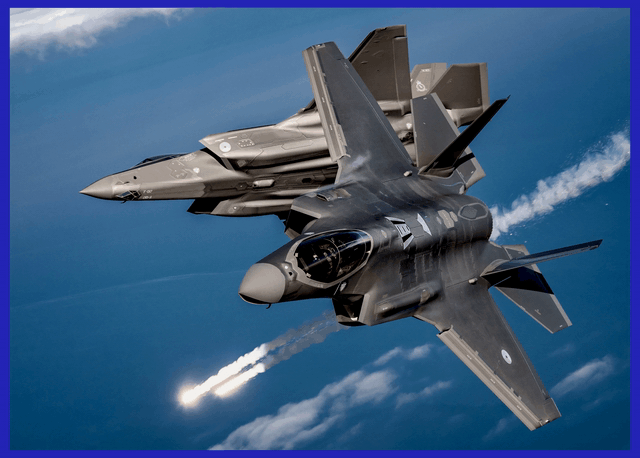
Important Announcement for Our Valued Readers!
After an article is published, it is possible that updates or changes may have occurred beyond the time of publication. Therefore, it is important to be aware that certain information in the article might be outdated. To ensure the most accurate analysis, it is highly recommended to verify the content with the latest sources available.
However, we are dedicated to delivering outstanding articles on military products and global updates. Maintaining quality and smooth operation requires resources. Your support sustains our efforts in providing insightful content. By purchasing high-quality products through our affiliated links, you help us keep our platform alive and acquire top-notch items. Your unwavering support is invaluable and inspires us to strive further.
We welcome your suggestions and requests for more information, as we value feedback from our readers. If there’s specific defence material or equipment not covered on our site, please share your request in the comments. We’ll strive to research and provide the required information. We sincerely thank you for your unwavering interest in our website, and we eagerly anticipate hearing from you! Enjoy your reading experience!
